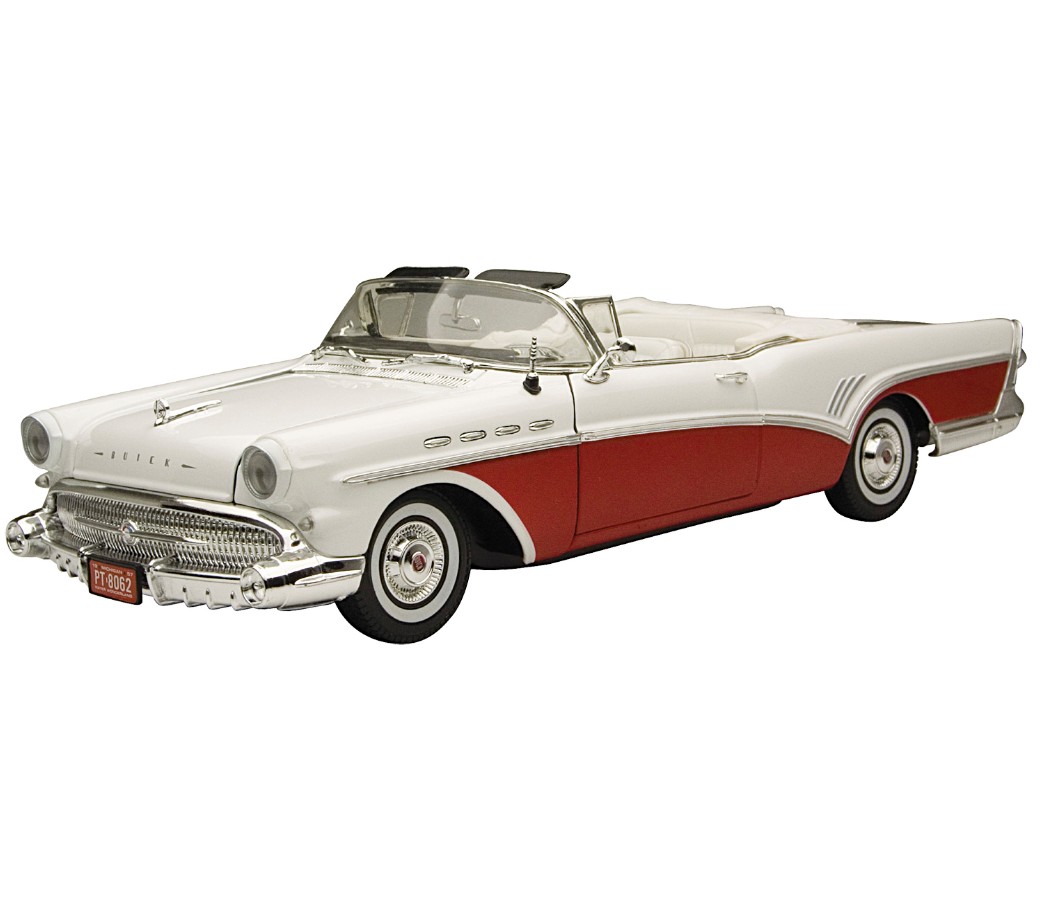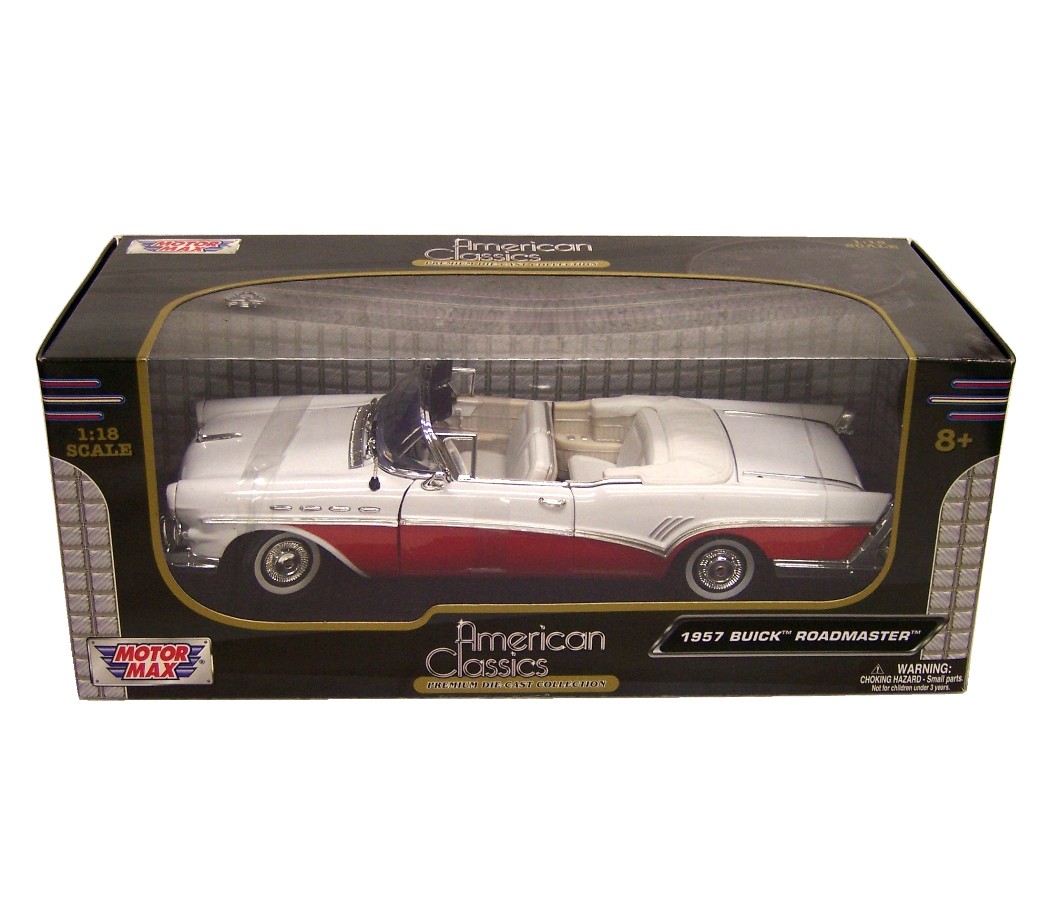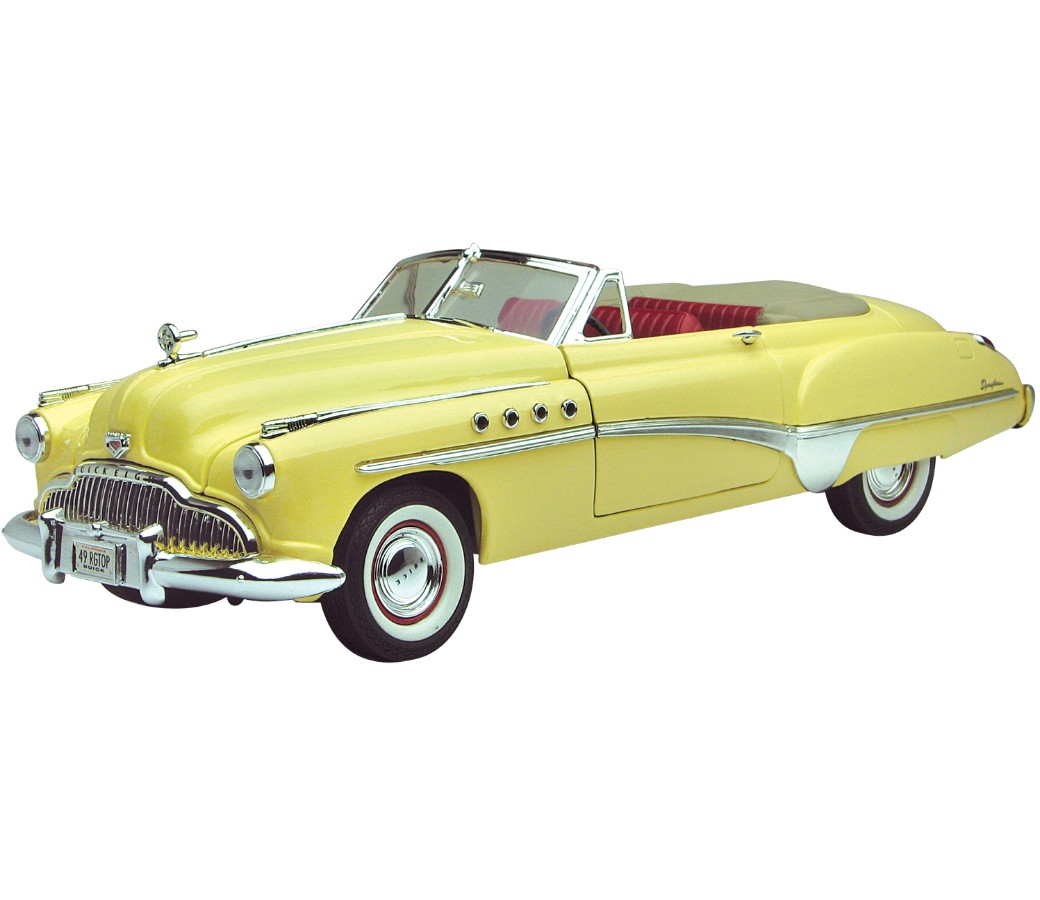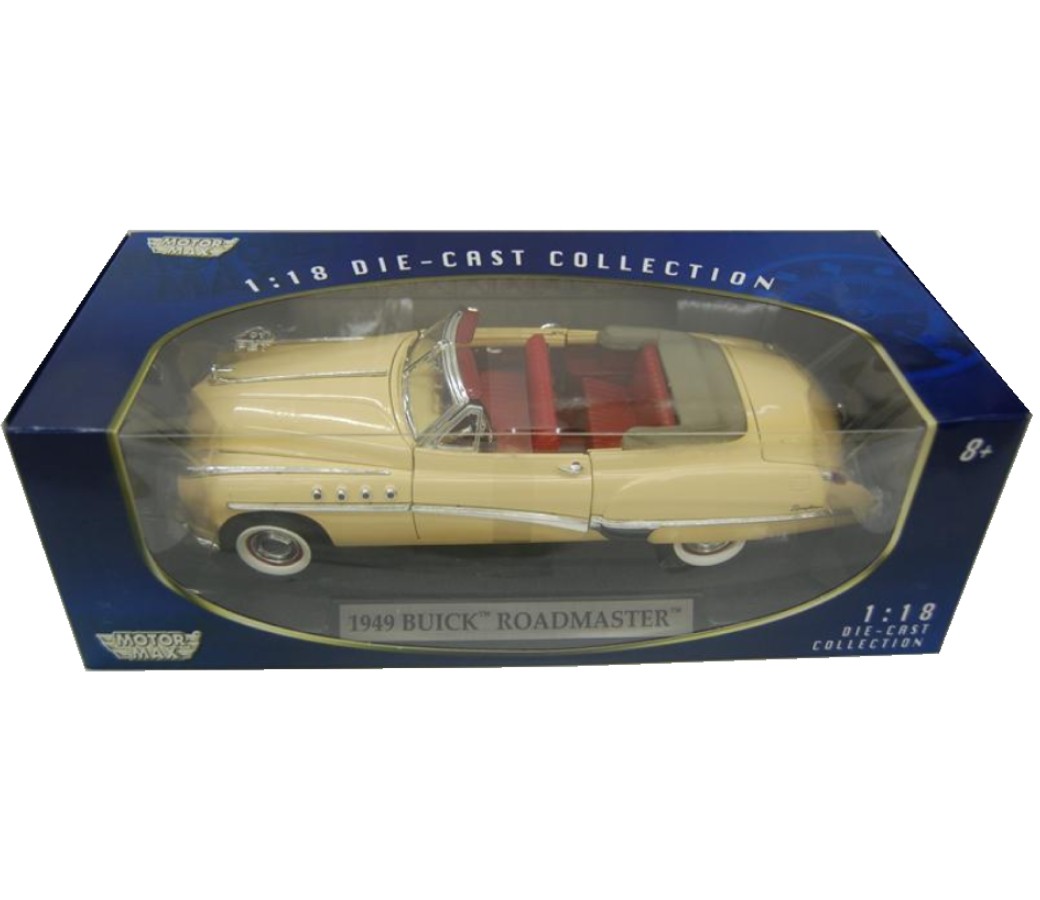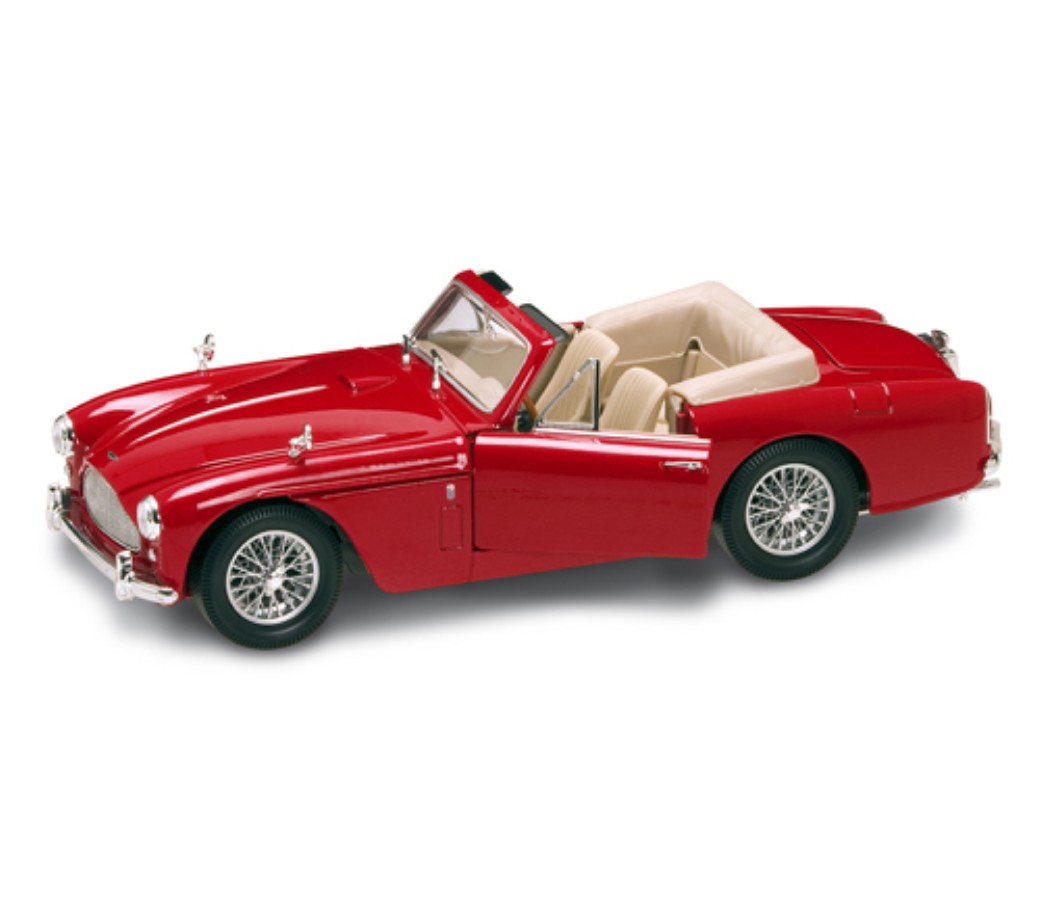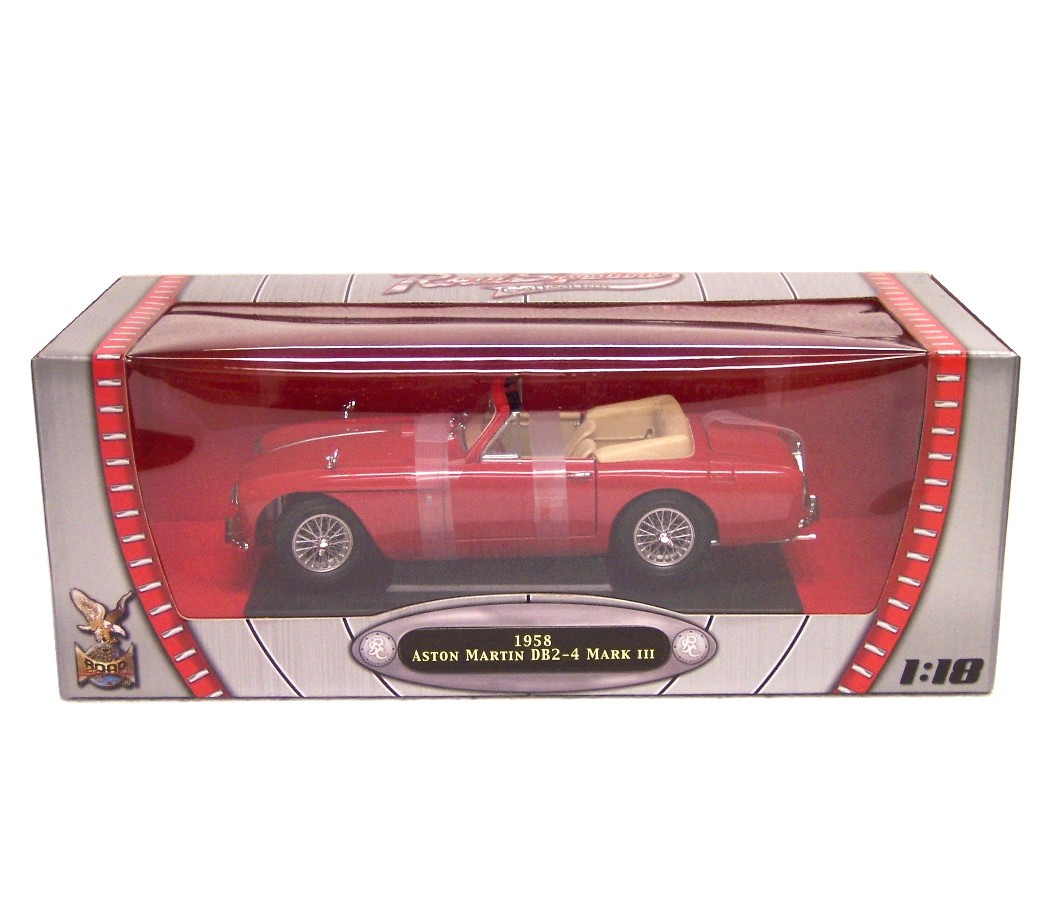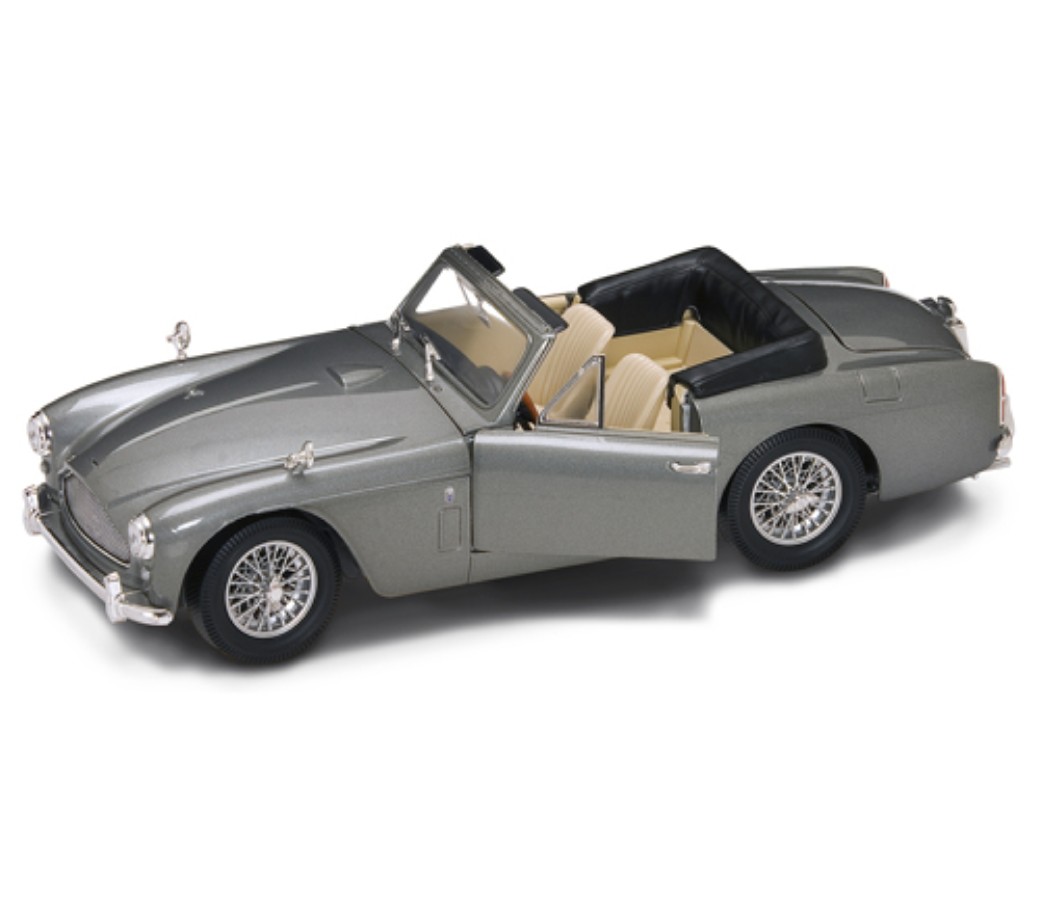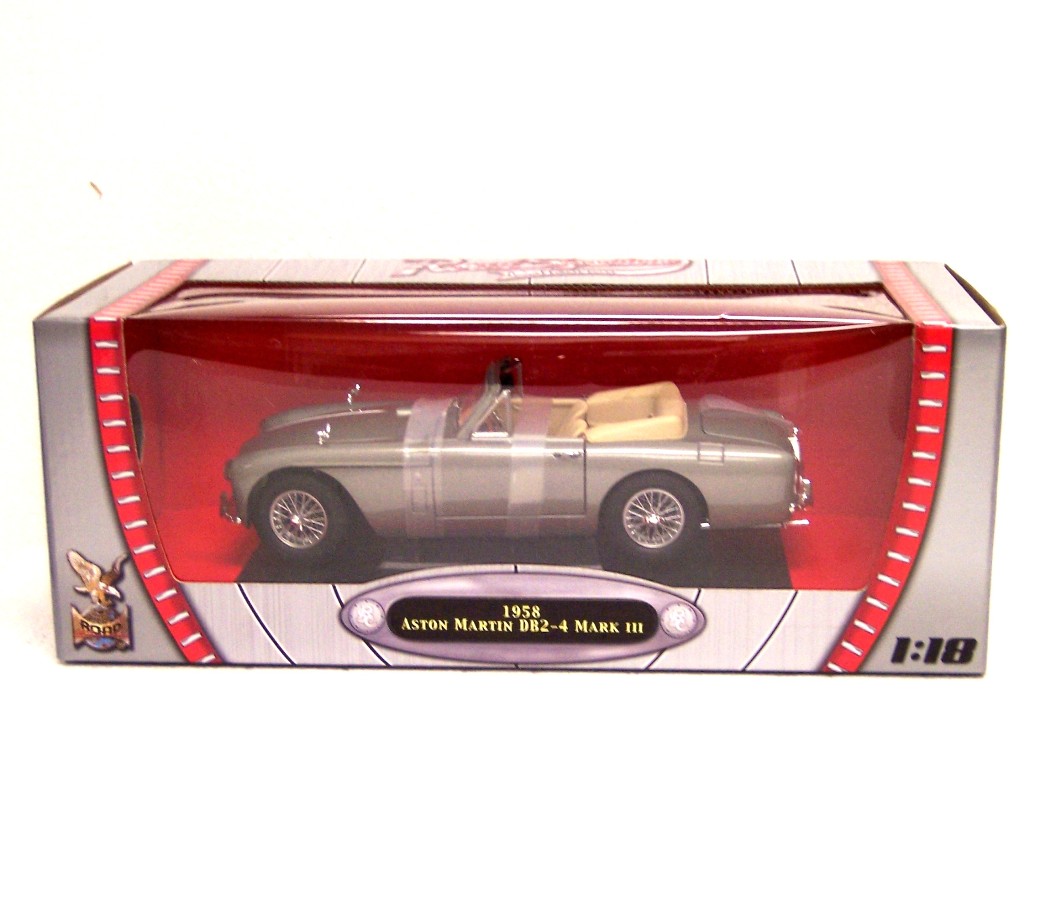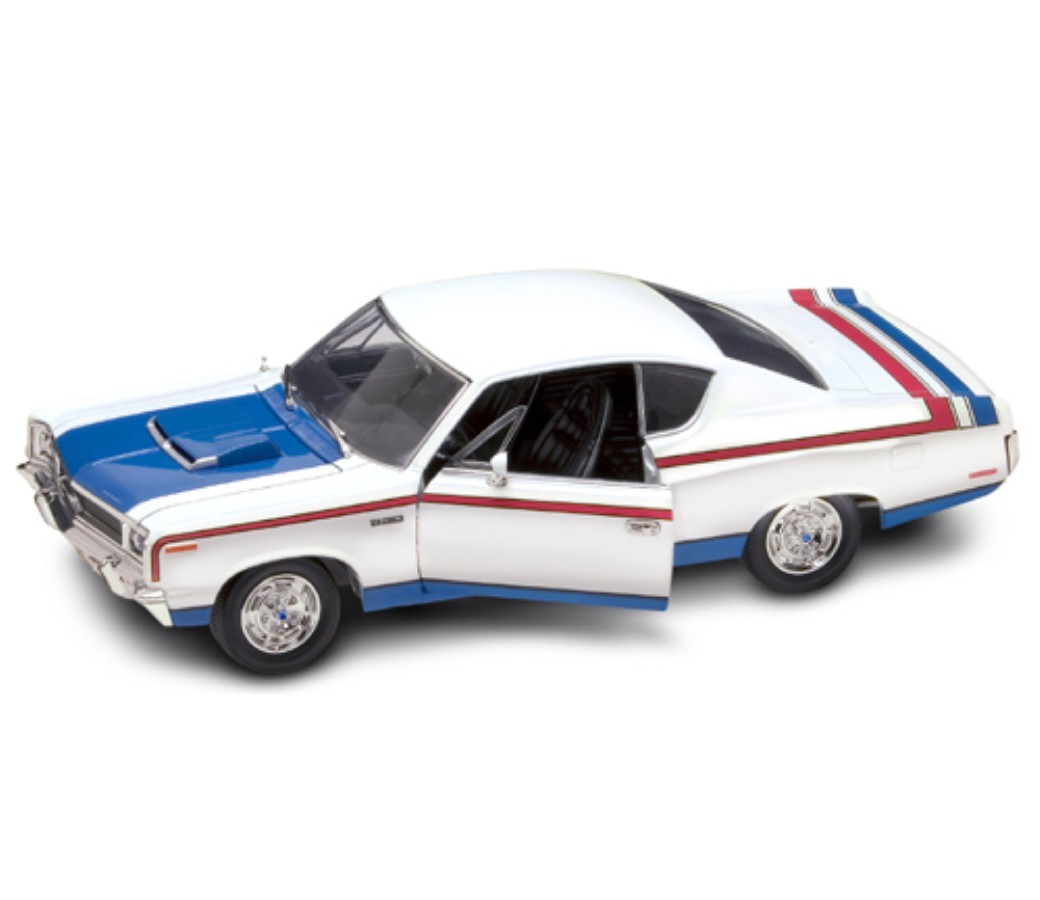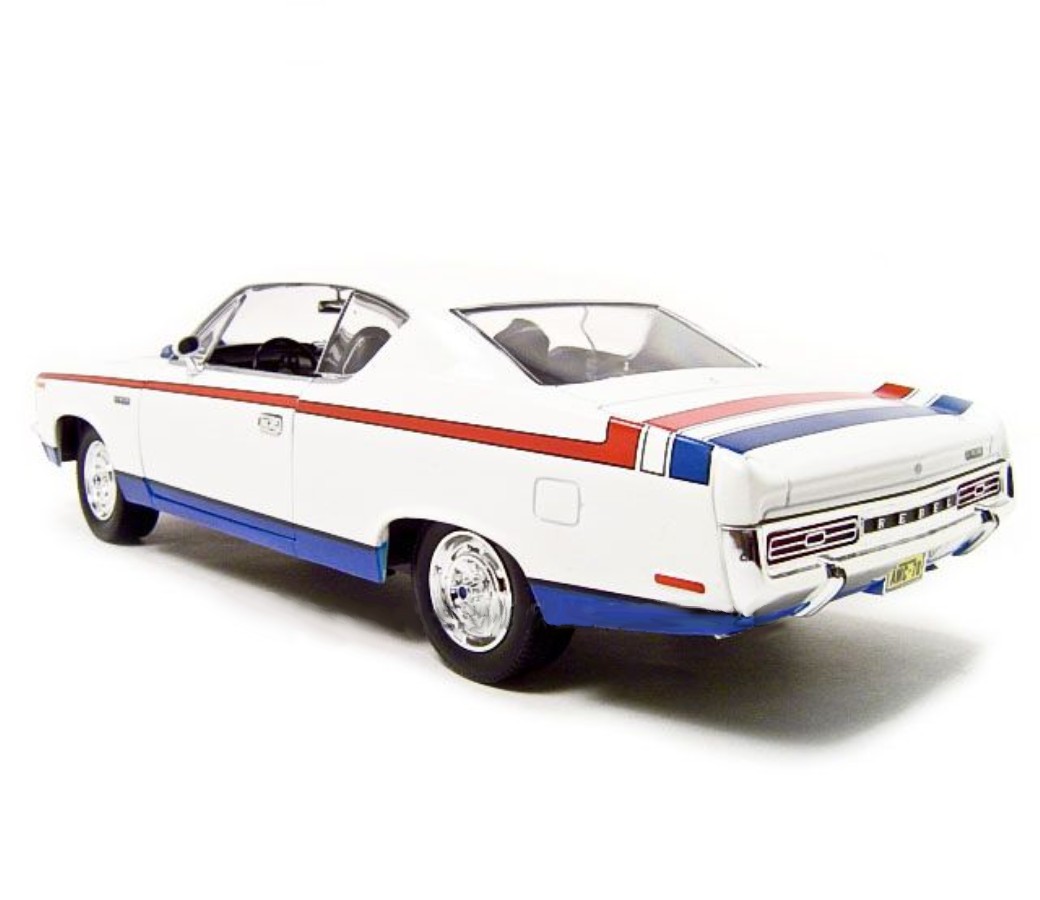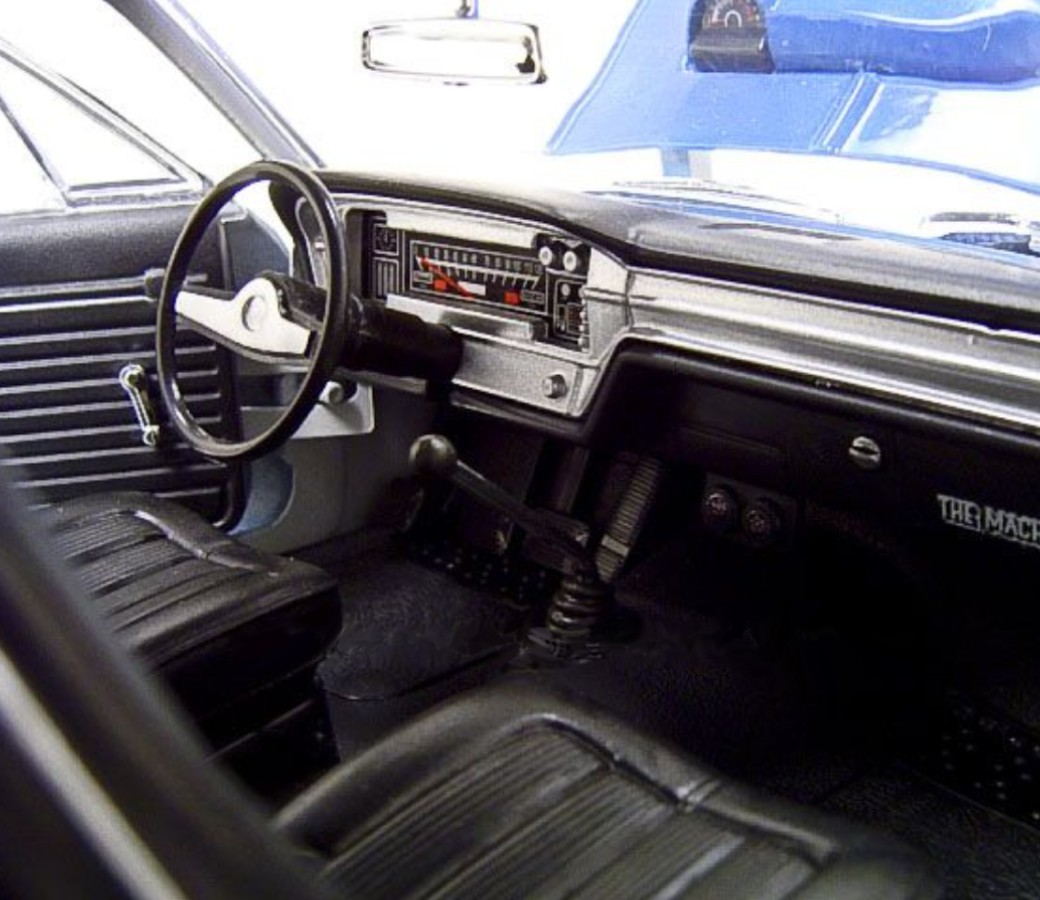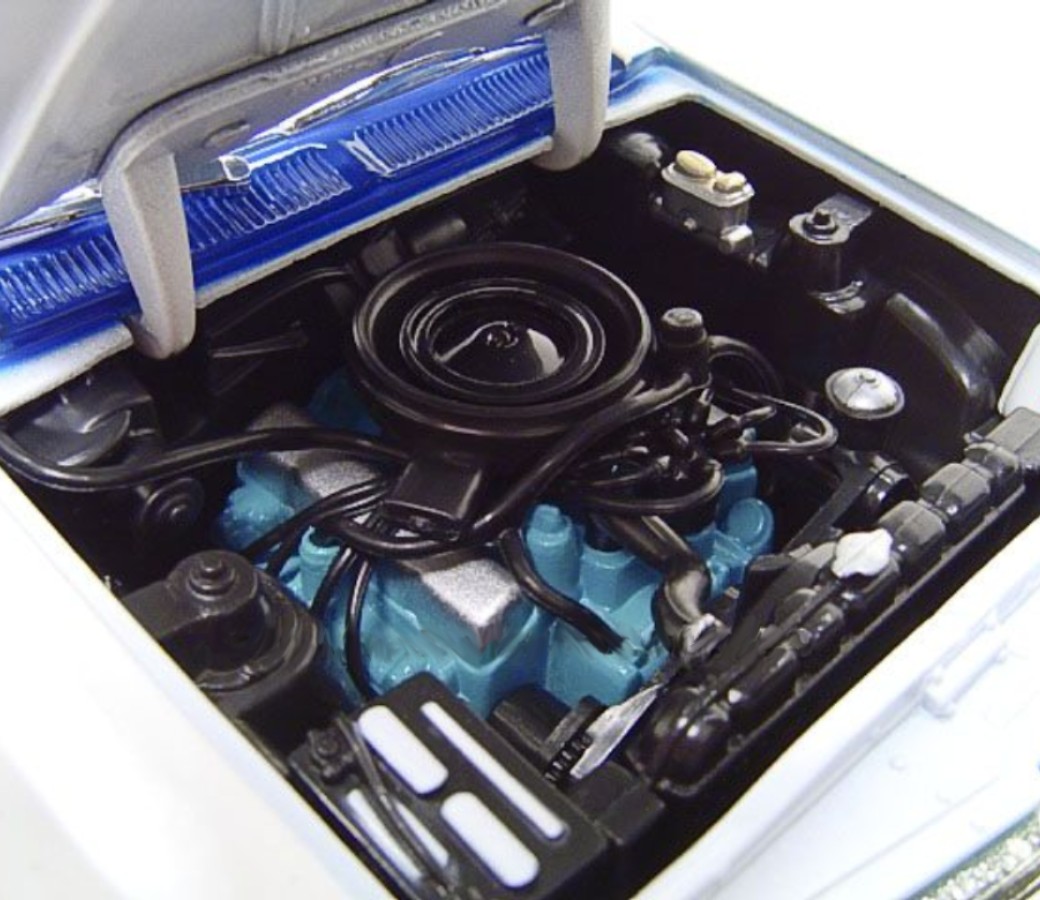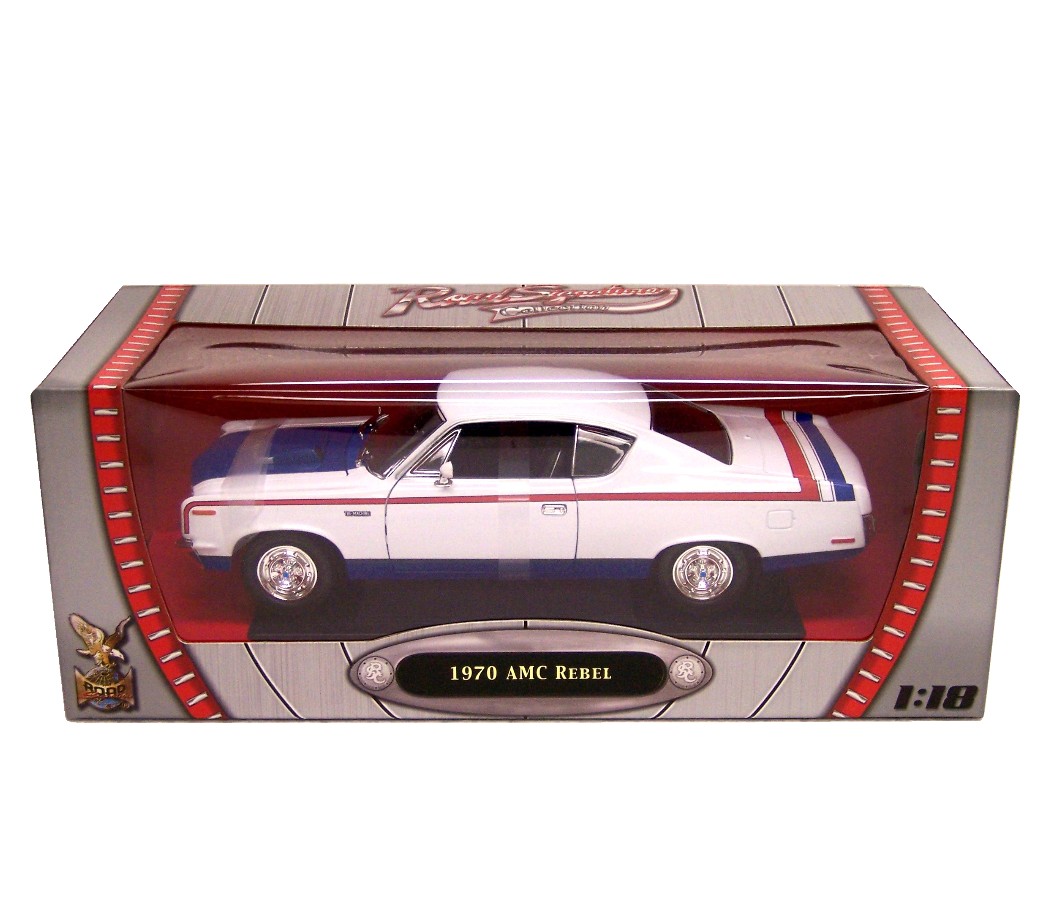1957 BUICK ROADMASTER – 1:18 (White + Red) MM73152WR
1957 BUICK ROADMASTER – 1:18 (White + Red) MM73152WR i is a high quality and low price product, and the price is most competitive compare with other providers. Moreover, we will give you more discount if you purchase in big quantity. When the order has done, we will choose the best way ship to you, according to the shipping address you have give to us. Our goal is to satisfy the customers with providing superior quality, up-to-date design, competitive price, fast delivery and excellent service. We want to make sure our customers confident in our products in all aspects. Enjoy your online shopping and welcome to our website again, thank you!
Purchase: [WHOLESALE] [RETAIL] [RETAIL]
-
1:18 scale diecast model of 1949 BUICK ROADMASTER die cast car by Moto Max.
-
Item comes packaged new in a window box.
-
Made of diecast with some plastic parts.
-
Detailed interior, exterior.
-
Opening boot and doors.
-
Authentically reproduced body styling and accurate details and rolling wheels.
-
Chromed ‘big ‘n little” spoke rims w/ matching treaded rubber tires.
-
Dimensions approximately L-10, W-4, H-2.5 inches
The Roadmaster was an automobile built by the Buick division of General Motors. Roadmasters produced between 1936 and 1958 were built on Buick’s longest non-limousine wheelbase and shared their basic structure with senior Oldsmobiles and entry-level Cadillacs. Between 1946 and 1957 the Roadmaster was Buick’s top of the line model. Buick again applied the Roadmaster name to its full-size rear-wheel drive models between 1991 and 1996.
1936-1937
The origins of the Roadmaster name date to 1936 when Buick added names to its entire model lineup to celebrate the engineering improvements and design advancements over their 1935 models. Buick’s Series 40 was named the Special, the Series 60 was named the Century and the Series 90 — Buick’s largest and most luxurious vehicle — was named the Limited. The Series 50 was retired, but new for the model year was the Series 80 Roadmaster. The implications of the name were clear, for as the 1936 Buick sales catalogue said, “It literally named itself the first time a test model leveled out on the open highway.”
The Roadmaster was introduced in a year when Buick’s valve-in-head straight-eight engines were heavily revised. Buick reduced the number of engines from four sizes to two: a 233-cubic-inch, 93-horsepower job for the Special, and a big, 320.2-cubic inch, 120-horsepower engine for the other series. (To put the size and power of Buick’s larger straight-eight engine in context, compare it to the new 322-cubic-inch mono-block 120 horsepower V-8 that Cadillac introduced that year.) In addition to this major engineering change 1936 was also the year Buick introduced an all steel turret top and hydraulic brakes. Coil springs were in the front.
The Roadmaster was a big car, in sedan form tipping the scales at 4,098 pounds, some 88 pounds heavier than Cadillac’s new Series 60. But pricewise, the Roadmaster was a tremendous bargain. The sedan sold for $1,255, $440 less than the least expensive Cadillac. The only other body style available was a four-door convertible phaeton, priced at $1,565 (of which only 1064 were produced), at a time when a Cadillac in the same body style sold at prices ranging from $2,745 to $7,850. Buick’s new engineering and styling was a big hit, with model year sales more than tripling from just over 48,000 to nearly 158,000, and with the all new Series 80 Roadmaster contributing a total of 16,049 units to that number.
With Roadmaster being a completely new model, and with Buick having totally restyled its entire line the previous year, one might have expected only modest changes for 1937. But that was not the case. The Roadmaster gained a divided grille with horizontal bars. The center section of the grille was painted to match the body of the car. Fenders became squared off and the headlight shells were gracefully streamlined. Overall height fell by 1.5 inches (38 mm) without sacrificing interior room. A new carburetor and revised camshaft raised engine horsepower to 130. The engine also received a new intake manifold, oil pump, cooling system and a quieter overhead valve mechanism. A formal sedan, featuring a roll-down glass partition between the front and rear compartments, was added to the Roadmaster line for $1,641, of which 452 were sold. The price of the sedan was raised to $1,518, and that of the phaeton to $1,856, or by 21 percent and 19 percent respectively. Nevertheless, overall Roadmaster sales increased to 16,129.
1938-1939
Styling changes for 1938 were modest, with a longer hood extending to a now nearly vertical grill, taller bumper guards and redesigned hubcaps, but the effect was striking. Important changes were made to both engine and chassis. The ride was improved by replacing the rear leaf springs with coil springs, supported by double-acting shock absorbers that were some four times the size of any others on the market. The frame X-member was changed from I-beam to channel construction and all wood structural elements were replaced with steel. The engine combustion chambers were redesigned and new “turbulator” pistons raised the compression ratio from 5.9 to 6.5:1, resulting in an increase in horsepower to 141.
The 4-door convertible phaeton traded its built-in trunk look for a fastback appearance, and a new fastback sedan was added to the line with 466 being sold. The Roadmaster’s price was increased, but not as swiftly as the previous year, going to $1,645 for the sedan. Although Buick’s overall market share increased in an off year, Roadmaster sales plummeted to 5568, falling from 7.3 percent to 3.3 percent of Buick’s total output.
Styling for 1939 featured a new two-piece “waterfall” grille with thin vertical bars. The hood was narrower, front door pillars were narrower and hubcaps were larger. Window area increased substantially with the rear window changing to a one-piece design. On the interior all major gauges were moved to in front of the driver and the gear shift was moved to a column mount. The 4-door phaeton could now be ordered with the built-in trunk appearance or as a fastback, but only three of the later were actually sold. Although prices were reduced (the price of the sedan fell to $1545) sales only rose to 6097, with Roadmaster’s share of Buick’s total sales falling to 2.9 percent.
1940-1941
In 1940 the Series 80 was renamed Limited. The Roadmaster name was transferred to the new Series 70, which was introduced at the same time as a brand new Series 50 Super. Like the Super, the new Roadmaster featured a cutting-edge “torpedo” body. Shoulder and hip room was over 5″ wider, running boards were eliminated and the exterior was streamlined and 2-3″ lower. When combined with a column mounted shift lever the cars offered true six passenger comfort. These changes had clearly been influenced by the Cadillac Sixty Special.
The 1940 Roadmaster had a shorter wheelbase, was lighter, and was less expensive than the previous year’s model. The formal and fastback sedans were gone, but for the first time a 2-door coupe was available, which sold a respectable 3,991 units. Also new for this year, the coach-building firm of Brunn was asked to design several custom-bodied Buicks for the Series 70, 80 and 90. Only one Roadmaster example is known to have actually been produced in 1940, an open-front town car not surprisingly called the Townmaster. Overall sales more than tripled to 18,345.
The styling changes for 1941 were modest, but the changes under the hood were major. The compression ratio was raised from 6.6:1 to 7.0:1, the “turbulator” pistons were redesigned, smaller spark plugs were substituted for the previous type and “Compound Carburetion” was introduced. Compound Carburetion was the forerunner of the modern four-barrel carburetor, and consisted of twin two-barrel carburetors. One unit operated all of the time, while the other operated only under hard acceleration. The new engine delivered 165 horsepower. With five more horsepower than a senior Packard, 15 more than any Cadillac, and 25 more than the largest Chryslers, it was the most powerful engine available that year on an American car.
A new bodystyle for this year was a 2-door convertible, which sold 1,845 units. There was also one Brunn designed convertible produced, but priced at $3,500 actual orders for the vehicle failed to appear. Overall sales remained respectable at 15,372.
1942–1948
The 1942 Roadmaster was longer, lower, wider, and roomier than before (a Harley Earl trademark), thanks in part to a longer wheelbase. There was also a new vertical-bar grille and “Airfoil” fenders that swept back all the way to the rear fenders. Both features would become a Buick icon and would be exhibited in one way or another for years to come. The 4-door phaeton was dropped and would never return.
Effective at the beginning of 1942, new automobiles were available only to those in occupations deemed essential to the war effort. By mid-January, cars with no exterior chrome trim apart from the bumpers were being produced. By February passenger car production was shut down completely. Despite the abbreviated model year a total of about 8,400 were sold.
When postwar automobile production resumed in the 1946 model year, chrome was more sparingly applied, swept-back fenders were fitted to sedans as well as coupes, and a war-inspired “bombsight” hood ornament was adopted. The instrument panel was two-toned with woodgrains except on convertibles which used body colored panels. Series identification was found on cloisonne emblems centered in the bumper guard front and rear. Compound Carburetion was eliminated and the compression ratio was reduced to 6.60:1. As a consequence the 1946 Roadmaster’s horsepower fell from 165 to 144. Torque on the other hand was hardly affected. Nevertheless, Roadmaster’s I-8 still produced more horsepower than a top of the line Chrysler’s. Prices, due to wartime inflation, were substantially higher. But the biggest change was in sales proportions. Roadmaster increased its share of Buick sales from four percent in 1941 to 20 percent in 1946, with a total of about 31,400 sold.
In 1947 a new stamped grille with a separate upper bar was used. The Roadmaster name appeared in red-filled script on chrome button within the bumper guard crossbars, front and rear. All new was an Estate wagon body style. It sold 300 units and instantly became the top of the line in the station wagon market.
In 1948 a series script appeared on the front fenders and the white Tenelite steering wheel that had been used previously was traded in for a black one, in order match the change from a two-tone woodgrain instrument panel to a two-tone gray instrument panel, with silver tone instruments. A new optional Custom Trim option was offered, consisting of cloth upholstery with leather bolsters with the robe cord cover and lower door panels done in leatherette. Convertibles acquired power windows, seat and top as standard equipment. But the biggest advancement was the introduction of Dynaflow, the first passenger car torque converter transmission. Optional on Roadmaster in its first year, it was so popular that by the following it was standard equipment. Overall sales were just under 80,000 in both 1947 and 1948, over four times greater than in any prewar year.
1949-1953
The Roadmaster received its first major postwar restyling in 1949. Its wheelbase and overall length were reduced but its weight was actually marginally increased. The biggest change was a much larger two-piece, curved glass windshield that the sales brochure described as like an “observation car.” It was also in 1949 that Buick introduced “VentiPorts.” Four were displayed on each of the Roadmaster’s front fenders,[4] with three on the fenders of all other Buicks. The sales brochure noted that VentiPorts helped ventilate the engine compartment, and possibly that was true in early 1949, but sometime during the model year they became plugged. The idea for VentiPorts grew out of a modification Buick styling chief Ned Nickles had added to his own 1948 Roadmaster. He had installed four amber lights on each side of his car’s hood wired to the distributor so as to flash on and off as each piston fired simulating the flames from the exhaust stack of a fighter airplane. Combined with the bombsight mascot, VentiPorts put the driver at the controls of an imaginary fighter airplane. Upon seeing this, Buick chief Harlow Curtice was so delighted that he ordered that (non-lighting) VentiPorts be installed on all 1949 Buicks, with the number of VentiPorts (three or four) corresponding to the relative displacement of the straight-eight engine installed.
Dynaflow was now standard equipment, and engine horsepower was increased to 150 through a slight increase in the compression ratio. In the middle of the year the Riviera, joined the body style lineup selling 4,314 units. Featuring power windows as standard equipment, the 2-door Buick Roadmaster Riviera, along with the Cadillac Series 62 Coupe de Ville and the Oldsmobile 98 Holiday, was among the first hardtop coupes ever produced. The Riviera was also notable for its popular optional “Sweepspear” chrome body side molding, which would soon become a Buick trademark. This chrome-plated strip started above the front wheel, after which it gently curved down nearly to the rocker panel just before the rear wheel, and then curved around the rear wheel in a quarter of a circle to go straight back to the tail-light. The “Riviera trim”, as it was initially called, was also made available on the Roadmaster convertible very late in the model year. With a total of 88,130 sold, the all-time annual record for Roadmaster, the model accounted for 27 percent of all Buick sales, a remarkably high proportion in light of its price, which was only slightly less than a Cadillac Series 61.
The 1950 restyling featured a grille so toothy that Consumer Reports commented that “a toothbrush for the dentures comes extra.” The Sweepspear had proved so popular in its first year that it was made standard on most body styles at the beginning of the 1950 model year, and on the station wagon and a new 4-door Riviera (not a hardtop) mid-year. New body styles for 1950 were a pair of upscale four-door sedans, one of which was tagged Riviera, which were stretched an extra four inches (102 mm) . The following year only the Riviera of these two sedans remained, and it would remain in the model lineup through 1953. Like the convertibles, all Rivieras, be they 2-door or 4-door, now came with both power windows and power seats as standard equipment. The only change under the hood was that hydraulic valve lifters were fitted to the engine. Overall Roadmaster sales fell to 75,034, with Roadmaster’s share of total Buick output plummeting to 12 percent, thanks mainly to the surging popularity of the Special.
Styling changes were minimal in 1951 and 1952. Power steering was added as an option in 1952 and horsepower climbed to 170 thanks primarily to a new four-barrel carburetor. Sales continued to slide falling to about 66,000 in 1951 and to 51,000 in 1952.
By 1953 the Roadmaster straight-eight was 16 years old and had become seriously dated. All of Roadmaster’s major competitors had shifted to short-stroke V-8 engines, and if Buick wanted to continue to be the paragon of longer, lower and wider, it needed one of its own. The new engine was ready in time for 1953, Buick’s Golden Anniversary year. Although the Nailhead (as it was popularly called) was nearly identical in displacement to the straight eight Fireball (322 versus 320 cubic inches), it was 13.5 inches (340 mm) shorter, four inches (102 mm) lower, and 180 pounds lighter, but with 188 horsepower, it was 11 percent more powerful. The compression ratio increased from 7.50:1 to 8.50:1 and torque increased from 280 to 300 pound-feet (410 N·m). With its new engine the 1953 Roadmaster proved to be the first Buick with a top speed of over 100 mph (160 km/h) since the prewar days.
The compact dimensions of the V-8 engine enabled Buick to reduce Roadmaster’s wheelbase by 4.75 inches (121 mm) across the line, although styling differences behind the engine cowl, apart from new V-8 emblem hubcaps, were largely nonexistent. Buick also introduced a new “Twin-Turbine” Dynaflow as a companion for the V-8 engine. Estimated to increase torque at the wheels by 10 percent, the new transmission provided faster and quieter acceleration at reduced engine speeds. Both power steering and power brakes were made standard. Air conditioning was a new option and, years before many other makes, a 12-volt electrical system was adopted.
A new body style for 1953 was the Skylark convertible. The Buick Roadmaster Skylark was one of three specialty convertibles produced in 1953 by General Motors, the other two being the Oldsmobile 98 Fiesta and the Cadillac Series 62 Eldorado. The Skylark featured open wheel wells, a drastically lowered belt line, a four-inch-chop from the standard Roadmaster’s windshield, the absence of VentiPorts and a new Sweepspear that anticipated Buick’s 1954 styling. Kelsey-Hayes wire wheels and a solid boot cover were standard. At $5,000 only 1,690 units were produced. The following year, and for one year only, it would become its own series built on a Century body. This was the last year for the Roadmaster Estate, and it was the last wood-bodied station wagon mass-produced in the United States. Its body was a product of Iona Manufacturing which built all Buick station wagon bodies between 1946 and 1964. Priced at $4,031, the Estate was second in price only to the Skylark, with 670 being sold. Overall Roadmaster sales bounced back up to 79,137.
